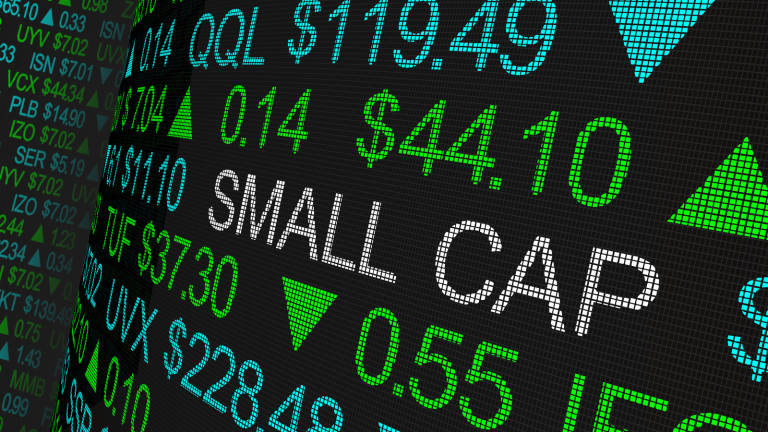In recent weeks, investors started pouring significant money into small-cap stocks. The move came after years during which the Street shunned the names because it believed they were not attractive in an era of high interest rates. Now that the Federal Reserve looks poised to cut rates in September, small-cap stocks, many of which are tremendously undervalued, have been starting to record big gains.
Additionally, I believe that many investors are realizing the fallacy that all small-cap stocks are untouchable just because rates are elevated. In fact, many such names can succeed despite high rates, even when the sector as a whole is not being embraced by the Street. For example, Western Alliance Bancorp (NYSE:WAL) advanced about 50% between June 2023 and December 2023 while American Superconductor (NASDAQ:AMSC) doubled between May 2023 and November 2023.
For investors who want a relatively low-risk means of benefiting from the small-cap rally, here are the three best small-cap exchange-traded funds (ETFs) to buy.
iShares Core S&P Small-Cap ETF (IJR)
The iShares Core S&P Small-Cap ETF (NYSEARCA: IJR) has performed very well during the recent small-cap rally. In fact, it soared about 10% between July 5 and July 23. Among its holdings that performed very well during this period were solar panel installer Sunrun (NASDAQ:RUN), shipping company Pitney Bowes (NYSE:PBI), and 3D printing firm 3D Systems (NASDAQ:DDD). All of those names surged at least 30% during the ETF’s recent rally.
Additionally, in terms of the sectors in which its holdings operate, the ETF is quite varied and well-balanced. Specifically, 17.2% of its assets are in industrial stocks, while its financial services holdings have a 16.9% weighting. Consumer cyclical, technology and healthcare stocks account for 14.8%, 13.6% and 10.2%, respectively. Moreover, its top ten holdings only account for 7.3% of its assets. So if three or four of its top holdings perform poorly the ETF will not be dragged down.
The ETF provides a dividend yield of 1.35%, while its expense ratio is a very low 0.06%.
All of the positive attributes that I described above make IJR stock one of the best small-cap ETFs to buy.
SPDR Portfolio S&P 600 Small Cap ETF (SPSM)
The SPDR Portfolio S&P 600 Small Cap ETF (NYSEARCA: SPSM) weights its holdings based on their market capitalizations. In other words, market capitalization determines the amount of assets it puts into each of its holdings. The most valuable companies get the largest weighting. As a result, the ETF limits the extent to which the most financially unstable small companies in its universe can bring down its shares. For conservative investors, this approach makes SPSM stock one of the best small-cap ETFs to buy.
Also importantly, analysts expect the earnings of the S&P 600 Small Cap Index, which is the index that SPSM stock seeks to track, to increase 20.5% and 16.1% in 2025 and 2026, respectively. Moreover, as of last month, the index had a very low forward price-to-earnings ratio of just under 15 times.
Like IJR stock, the holdings of SPSM stock operate in many sectors and its sector weighting is balanced. In fact, their sector weightings are almost completely identical. So SPSM stock has 17.2% of its assets in industrial stocks, while its financial services holdings have a 16.9% weighting. Consumer cyclical, technology and healthcare stocks account for 14.8%, 13.6%, and 10.2% of its holdings, respectively.
The ETF has a significant dividend yield of 1.7% and a tiny expense ratio of 0.03%.
iShares Russell 2000 ETF (IWM)
In my experience, the iShares Russell 2000 ETF (NYSEARCA: IWM) is the most famous of the small-cap ETFs. Commentators usually refer to this ETF’s performance when trying to gauge small-cap gains or losses. That fame could give the ETF an advantage over its peers by increasing its inflows.
According to Todd Rosenbluth, director of research at data provider VettaFi, the iShares Russell 2000 ETF has more of its assets in healthcare than the other two ETFs highlighted. Indeed, the iShares Russell 2000 ETF devotes 17% of its assets to healthcare stocks versus just 10.2% for IJR and SPSM. That disparity could represent another advantage for IWM stock, since many healthcare equities have performed quite well in recent weeks. For example, the iShares Biotechnology ETF (NASDAQ:IBB) jumped nearly 10% between July 3 and July 24.
IWM stock has a dividend yield of 1.3% and an expense ratio of 0.19%.
On the date of publication, Larry Ramer held a long position in AMSC. The opinions expressed in this article are those of the writer, subject to the InvestorPlace.com Publishing Guidelines.
On the date of publication, the responsible editor did not have (either directly or indirectly) any positions in the securities mentioned in this article.

